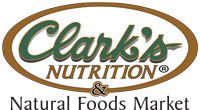Diabetes Friendly Recipes
Related Topics
-
Nutrition for Babies, Children, & Tweens
-
Nutrition for Children
-
Nutrition for Tweens
-
Does My Child Need Supplements?
Nutrition Recommendations for Babies
For Birth through the First Year
Definitions
- DRIs = Dietary Reference Intakes. Different nutrients include RDAs, AIs, and ULs.
- RDA = Recommended Dietary Allowance. The average daily level that most healthy people need to prevent a deficiency. RDAs vary by age and gender.
- AIs = Adequate Intakes. Used when there is not enough information to develop an RDA. A “best guess” amount based on the available evidence.
- UL = Tolerable Upper Intake Level. The maximum daily intake that is unlikely to cause harm with long-term use.
Recommendations
Calcium: Calcium needs increase steadily throughout childhood and remain high throughout the teen years, when the bulk of the bone development takes place.
- Dietary Reference Intakes (DRIs)
- Adequate Intake (AI) 0–6 months: 200 mg
- Adequate Intake (AI) 7–12 months: 260 mg
- Upper Intake Level (UL) 0–6 months: 1,000 mg
- Upper Intake Level (UL) 7–12 months: 1,500 mg
Choline: Choline is needed for optimal brain and nervous system development. Many children might not get enough of this important nutrient.
- Dietary Reference Intakes (DRIs)
- Adequate Intakes (AI) 0–6 months: 125 mg
- Adequate Intakes (AI) 7–12 months: 150 mg
- Upper Intake Level (UL): Not established for this age group
Folate: Adequate folate is important to maintain normal growth rates in children.
- Dietary Reference Intakes (DRIs)
- Adequate Intake (AI) 0–6 months: 65 mcg
- Adequate Intake (AI) 7–12 months: 80 mcg
- Upper Intake Level (UL): Not established for this age group
Iodine: Babies need enough iodine for normal thyroid function and for proper brain and bone development.
- Dietary Reference Intakes (DRIs)
- Adequate Intake (AI) 0–6 months: 110 mcg
- Adequate Intake (AI) 7–12 months: 130 mcg
- Upper Intake Level (UL): Not established for this age group
Iron: Breast-fed babies get about 0.27 mg of iron per day from breast milk.
- Dietary Reference Intakes (DRIs)
- Adequate Intake (AI) 0–6 months old: 0.27 mg
- Recommended Dietary Allowance (RDA) 7–12 months: 11 mg
- Upper Intake Level (UL) 7–12 months: 40 mg
Vitamin A: Food and supplement labels list vitamin A in International Units (IUs), but as the availability of vitamin A to the body varies depending on the source. Nutritionists use “Retinol Activity Equivalents” (1 IU of vitamin A (retinol) = 0.3 mcg RAE).
- Dietary Reference Intakes (DRIs)
- Adequate Intake (AI) 0–6 months: 400 mcg RAE
- Adequate Intake (AI) 7–12 months: 500 mcg RAE
- Upper Intake Level (UL) Birth–3 years: 600 mcg RAE (2,000 IU)
Vitamin B12: Breast-fed babies of vegetarian or vegan moms may not get enough vitamin B12.
- Dietary Reference Intakes (DRIs)
- Adequate Intake (AI) 0–6 months: 0.4 mcg
- Adequate Intake (AI) 7–12 months: 0.5 mcg
- Upper Intake Level (UL): Vitamin B12 appears safe at all intake levels from food and supplements.
Vitamin C: Vitamin C is a key player in immune system and collagen health, and helps improve iron absorption.
- Dietary Reference Intakes (DRIs)
- Adequate Intake (AI) 0–6 months: 40 mg
- Adequate Intake (AI) 7–12 months: 50 mg
- Upper Intake Level (UL): Not established for this age group
Vitamin D: Breast–fed babies should receive supplemental vitamin D, as breast milk contains very little of this nutrient.
- Dietary Reference Intakes (DRIs)
- Adequate Intake (AI) 0–12 months: 400 IU
- Upper Intake Level (UL) 0–6 months: 1,000 IU
- Upper Intake Level (UL) 7–12 months: 1,500 IU
How much is too much?
- Most children won’t get too much calcium from diet alone, but when combined with supplements, it’s possible to overdose.
- You can’t overdose on naturally occurring folate, but fortified foods and folic acid-containing supplements should be consumed in moderation.
- Iodine excess can cause symptoms similar to iodine deficiency.
- Excess iron can cause serious organ toxicity.
- Vitamin A is fat-soluble, so it can build up in the body and cause toxicity. Only pre-formed vitamin A from animal sources and supplements containing vitamin A as retinol or retinyl palmitate can cause toxicity; pro-vitamin A from plant sources doesn’t have this effect.
- Excess vitamin C can cause stomach cramps and diarrhea.
- Most children are more likely to have a deficiency of vitamin D than to be getting too much. However, vitamin D can be toxic in large amounts.










